
The shift from long summer weekends lazing around camp to down jackets and indoor pursuits is a fall rite of passage for the majority of campers. Sad though we are to give up evening campfires and starry nights, even the most seasoned outdoor lovers can be intimidated by cold temperatures and the threat of ice and snow. When it comes to winter camping, it’s all about education and preparation.
What should you pack? How can you forecast danger? Which campgrounds are open year-round? Is RV camping or cabin camping your style? This winter, break through the barriers to four-season camping with our beginner’s guide to planning a safe and successful cold weather adventure.
This is the Ultimate Guide to Cold Weather Camping in America.
What Are the Benefits of Winter Camping?
The benefits of venturing out during the off-season are many, with less crowds, fewer bugs and your choice of prime campsites topping the list. At first it’s an eerie feeling to have the wilderness all to yourself, but once you get used to it you may never go back. Solitude and untouched landscapes are yours alone, and you’re likely to see more wildlife as a result. From your winter camp, you’ll also be in position to explore wild places in new ways, like on snowshoes or cross country skis.
Reaping the benefits of winter camping starts with knowing how your body responds to the cold. Note your reaction to various temperatures during day hikes to accurately gauge how you’ll feel as temperatures drop. It’s also important to understand wind chill, dew point and humidity, and how wind and moisture can make you feel colder, even in moderate temperatures. Keep in mind that temperatures drop rapidly as the sun sets, a clear night is colder than a night with cloud cover, and the mercury typically plunges to its lowest point just before dawn.
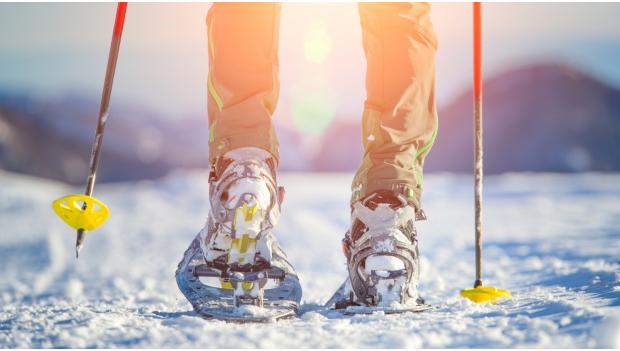
Recommended: Winter Adventure: 7 Outdoor Activities for Cold Weather
When and Why Should You Go?
Because winter camping adds so many new elements to your trip, it’s important to ask yourself why you want to brave the cold. Solid motivation, like exploring a place that’s otherwise inaccessible, like regions of Yellowstone National Park, or the desire to try dog sledding in Denali, will keep you going.
Many outfitters and hiking clubs offer workshops on winter camping. You can also gain experience by signing up for a guided trip, but nothing beats hands-on experience outdoors. Build skills through a progression of day hikes close to home, increasing length and difficulty of terrain over time. Practice fire and shelter building in the rain and snow, and if your motivation holds up against these challenges, plan a one-night car camping trip close to home.
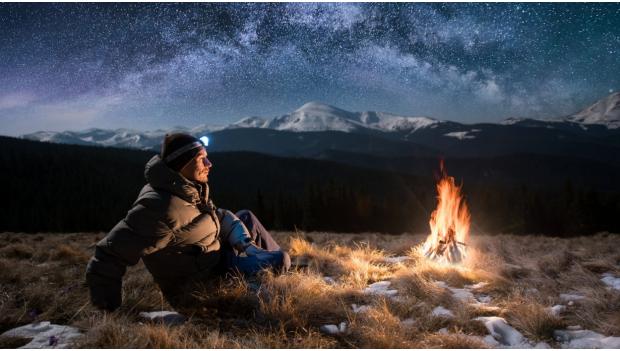
RV, Cabin or Tent? Choose Base Camp Wisely
The most successful outdoor adventures are usually planned with the least experienced participants in mind. Consider your group’s abilities, and pick a base camp where they’ll feel most comfortable. Winter cabin camping gives you most of the comforts of home for groups with young children, seniors and inexperienced campers. Winter RV camping offers the same benefits as a cabin, but you’ll have to monitor road conditions closely in bad weather.
If everyone in your group has the motivation and experience, you can consider options with greater exposure to the elements, like four season tents, bivy sacks and snow caves. Research your destination and weather conditions thoroughly and make sure everyone in your group not only has the right gear, but knows how to use it.
Equally important is familiarity with the topography of your winter camping destination. Don’t set up shelter in low lying areas where moisture pools and cold air troughs form, or on ridgelines where wind is strongest and precipitation freezes first. Avoid avalanche-prone areas and pack snow against the ground under your tent to increase snow’s insulating qualities. Position shelter openings perpendicular to the wind to minimize draft and wind resistance. Pick a spot where you’ll catch the sun’s first beams for a quick warm up in the morning.
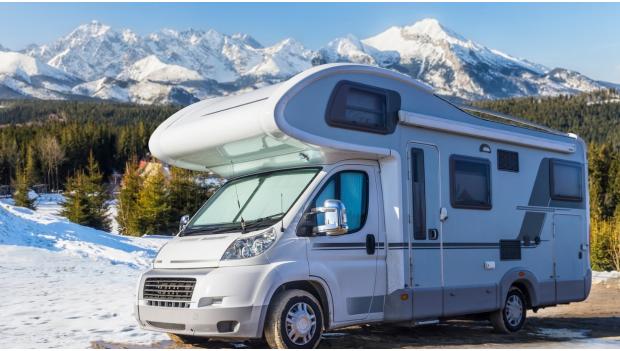
Recommended: Life-Changing Cold Weather Camping Hacks
Pack the Right Winter Gear
Tougher weather conditions leave you little margin for gear errors, but if you can check these five must-have winter camping items off your list, you’ll be ahead of the game.
1. Shelter: If you’re not cabin or RV camping, pack a four-season tent for the greatest protection from the elements. Tent poles and fabric are constructed to withstand high wind and heavy snow, and the fly extends to the ground for greater insulation.
2. Layered Clothing: Because temperatures will fluctuate more widely in winter, you’ll need more removable layers of clothing than any other time of the year. At a minimum, pack a moisture wicking base layer, a warmth layer of fleece or wool and a wind resistant outer shell. A hat, gloves and neck gaiter are essential in freezing temperatures.
3. Headlamp: The short days of winter will likely have you setting up or breaking down camp in the dark, which will be much easier if you pack a headlamp. You’ll also love being able to snuggle down at night to read a good book.
4. Sleep System: Protect yourself against the winter chill with a multilayered sleep system. Start with a closed cell foam pad and insulated inflatable pad for cushioning, then add a sleeping bag with insulation and a temperature rating to match your camping conditions. A sleeping bag liner can increase your bag’s rating as much as 15 degrees, and sleeping bag features like hoods and draft collars ward off the predawn chill.
5. Waterproof Boots: Happy feet mean happy campers. To keep your feet warm and dry, go with features like leather uppers, waterproof membrane and deep, thick lugs for traction. Apply a waterproofing treatment before you leave home for added protection.
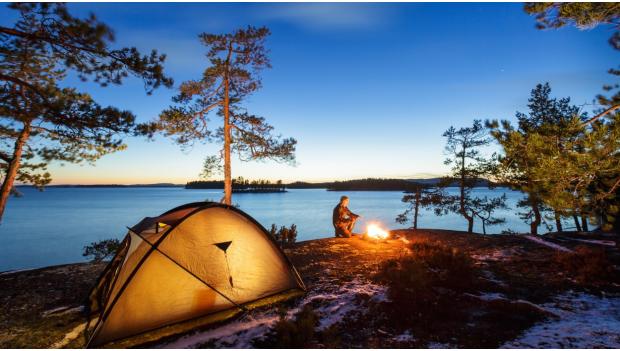
Recommended: Warm Weather Winter Camping Getaways
Watch for Emergency Warning Signs
Winter camping requires extra vigilance and flexibility before and during your trip. Watch weather patterns and local forecasts for your destination the week prior. If a major weather event is in the forecast that could put you at risk for high winds, snow, ice, lightning, flooding rains, tornadoes or hail, be prepared to postpone the trip. It’s always better to be safe than sorry.
Once you’ve arrived at camp, make sure you have cell reception and a back-up communication method like a satellite messaging device for weather updates. Be prepared to change your route or pack up and head home if conditions deteriorate.
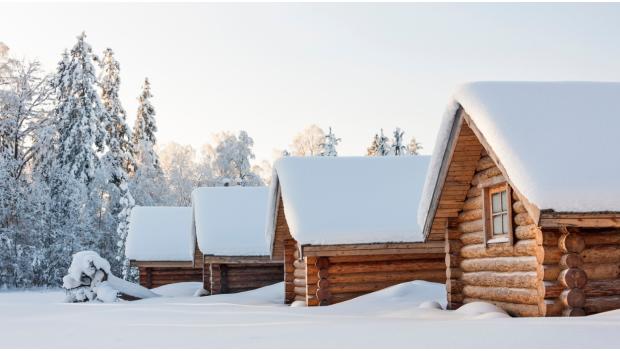
How to Reserve Your Winter Campsite
U.S. campgrounds that stay open in winter often switch to a walk-in reservation system, making it much easier than in summertime to get a prime site and work around major weather events. In national parks, wildlife management areas, and national and state forests, all you need for winter wilderness camping is a permit and there are typically plenty available.
Most campgrounds like Wisconsin’s Big Bay State Park list in-season reservation dates and walk-in reservation periods. Many campgrounds in the Pacific Northwest, like Prineville Reservoir State Park, are open year-round. In the west, campgrounds like Henrys Lake State Park are open May to October, while Midwestern campgrounds like Maquoketa Caves State Park take campers May to September.
In the northeast, peak season at campgrounds like the Boston/Cape Cod KOA runs from March to November, with plenty of winter camping options like Beartown State Forest. High elevation campgrounds have shorter seasons, and campgrounds offering cabin camping frequently take reservations all year. Keep in mind that winter typically means fewer support services like dining and transportation in parks and gateway towns.